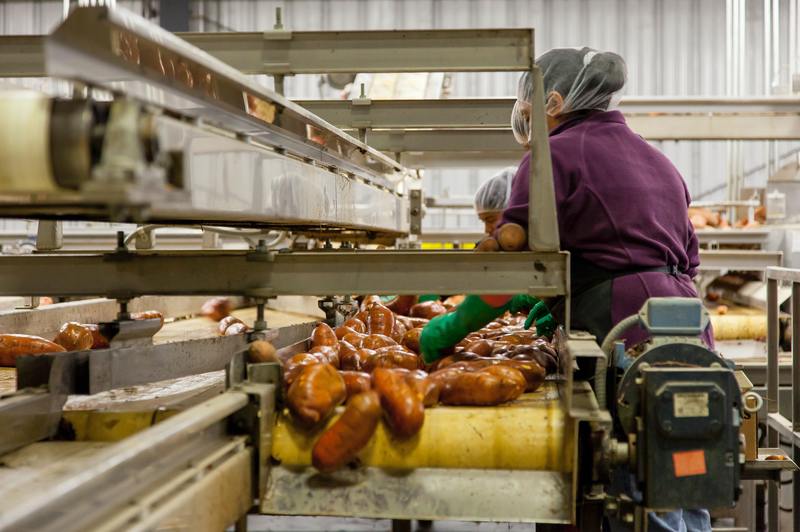What are pest control practices for food processing? It is most likely because pests provide a wide range of threats, germs, viruses, and other organisms to every food-handling facility.
Pest control is a critical part of your company’s continuing procedure for ensuring the quality of your food and beverages. If taken to its logical conclusion that the proper process, your food establishment’s closure may mean the end of the company as we know it.

Here are some of what you should know about pest control.
What Are The Types Of Pest Threats To The Food Industry?
Pest growth depends on the location, weather, and food components. However, rats, flies, cockroaches, beetles, and moths are pests that you can find in nearly any food processing facility.
There are many pests to be discovered for pests that infest food facilities. Therefore, pest management in the food business necessitates precise species identification so that you may use the appropriate treatment procedures for optimal outcomes.
Pests often seen in the food business include the following:
1. Cockroaches
In addition to six parasitic worms, seven human illnesses, and at least 33 types of bacteria, cockroaches can conceal themselves in tight spaces. They also have a diverse diet and a propensity for fast reproduction.
As they creep through waste and other filthy areas, they may collect dirt and bacteria on their legs, which can subsequently be transported to food, workspaces, and food machinery, raising the risk of contamination.
2. Flies
Aside from compromising healthy produce, manufacturing, processing devices, and other working areas, they also transmit disease-causing germs by breeding in rotting waste and damp, dirty surroundings. As they eat, they absorb dirty stuff into their mouths and bodies.
The digestive fluids of certain animals can be regurgitated and even defecated during feeding and rest. It adds to the spread of the disease.
3. Rodents
Rodents plagued the food business even today, which pose a severe threat. Rats and mice are examples of rodents.
You can still detect a rat infestation by looking for indications such as chewing noises, excrement, nibbling of cables and wiring, and urine stains that you can see under UV light. They mate quickly and nest near to where they get their food.
What Are The Pest Control Practices For Food Processing?
Pest control methods for food processing are restriction, prevention, physical removal, and chemical techniques. Alternatively, professionals also employ biological control approaches like sterilization programs.
Pest management in the food processing industry relies significantly on facility managers’ ability to detect, analyze, and respond to infestations as soon as anyone sees them. Any building, large or small, might suffer from an infestation at any time if a skilled pest control company doesn’t address it.
Pest control specialists use a comprehensive strategy described as integrated pest management (IPM) plan to decide the best course of action for a specific pest problem.
Facility managers and pest control specialists must work together to ensure the performance of an IPM strategy since treatments depend on each facility’s specific needs. Facility managers may eliminate costly outbreaks and maintain operating if they recognize the warning signals and collaborate.
For additional help about a pest, read articles on what are the critical pest control equipment or answer the question is pest control safe for humans?
What Are The Methods Of IPM?
IPM has five distinct stages. These things are in a practical management approach, which provides sealing crevices in sidewalks and walls, relocating garbage bins away from buildings, and using suitable pesticide treatments to keep pests from invading.
An appropriate pest management strategy must be both ecologically friendly and financially viable.
How Can You Follow An Effective Pest Management Program?
1. Inspection
The core of an effective IPM program is arranging routine monitoring. Storage facilities, garbage bins, and loading platforms are just a few of the places where bugs are known to hide.
2. Preventive measures
Regular maintenance inspections are one of the best ways to prevent problems. Professionals may seal all possible access spots and ensure that the entire building is pest-proof throughout these inspections.
3. Identify pests
It’s easier to get rid of them and begin treatment if you know what you are dealing with and how many existing types.
4. Assessment
After recognizing the current problem, you must determine why and how it occurs. The answers to these questions will help determine the optimum method of control.
5. Treatment
Non-chemical remedies like capturing should prioritize chemical ones when establishing an IPM.
6. Observe
Pest infestations can be prevented and eliminated by adjustments in your facilities and your operating procedures.
7. Keeping track
The outcome of the inspection by the food safety inspector may determine whether your food production facility will remain open or close its doors. Your IPM program must include room for monitoring.
Conclusion
Learning what are pest control practices for food processing, it’s best to conduct and plan yours carefully. Make sure you adhere to the safety standards and follow the protocols and ask the authorities and professionals for guidance.
